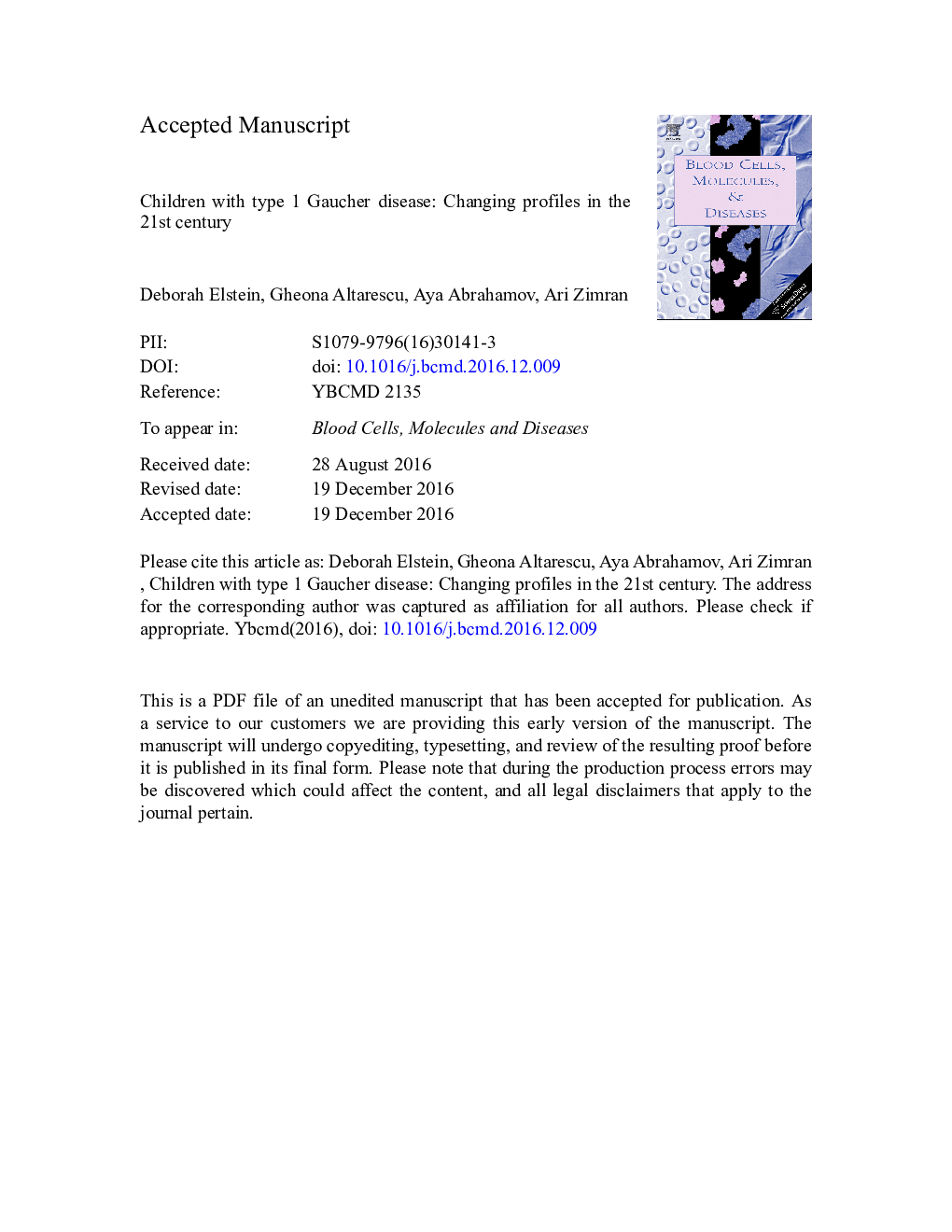| Article ID | Journal | Published Year | Pages | File Type |
|---|---|---|---|---|
| 8648089 | Blood Cells, Molecules, and Diseases | 2018 | 15 Pages |
Abstract
Gaucher disease (GD) has phenotypic variability. Increased GD awareness especially among at-risk Ashkenazi Jews (AJ) and availability of non-invasive diagnosis induced trend to prenatal screening. We retrospectively assessed pediatric (< 16 years) Israeli AJ GD patients to ascertain demographics and phenotype at presentation and over-time because many were identified by large-scale screening. 55/67 patients born since 01/01/2000 are AJ with non-neuronopathic GD: 28 (50.9%) are N370S/N370S; 24 (43.6%) are N370S/other; 3 (3.5%) have no N370S allele. 30 (54.5%) diagnosed by screening; 10 (18.2%) with sibling diagnosed by screening. Of 19 (34.5%) receiving enzyme replacement therapy (ERT), 4/19 (21.1%) were by screening (N370S/N370S; N370S/L444P, N370S/84GG, N370S/IVS2 + 1); 15/19 (78.9%) diagnosed by symptoms and/or symptomatic sibling. 4/19 (21.1%) began ERT at age < 2 years; 9/19 (47.4%) at 3-5 years; 6/19 (31.6%) at 6-12 years. 49% presented with height/weight growth percentiles â¤Â 25%, but group means were comparable up to 12 years follow-up including 10 receiving ERT (8 for > 5 years). 22% presented with anemia, 20% with thrombocytopenia; at last follow-up 4% and 6%, respectively, remained cytopenic. We present a new demographic profile for pediatric GD because many identified by screening had/have few GD signs/symptoms. Nonetheless, early diagnosis is important, especially for non-N370S, non-mild genotypes.
Related Topics
Life Sciences
Biochemistry, Genetics and Molecular Biology
Molecular Biology
Authors
Deborah Elstein, Gheona Altarescu, Aya Abrahamov, Ari Zimran,
